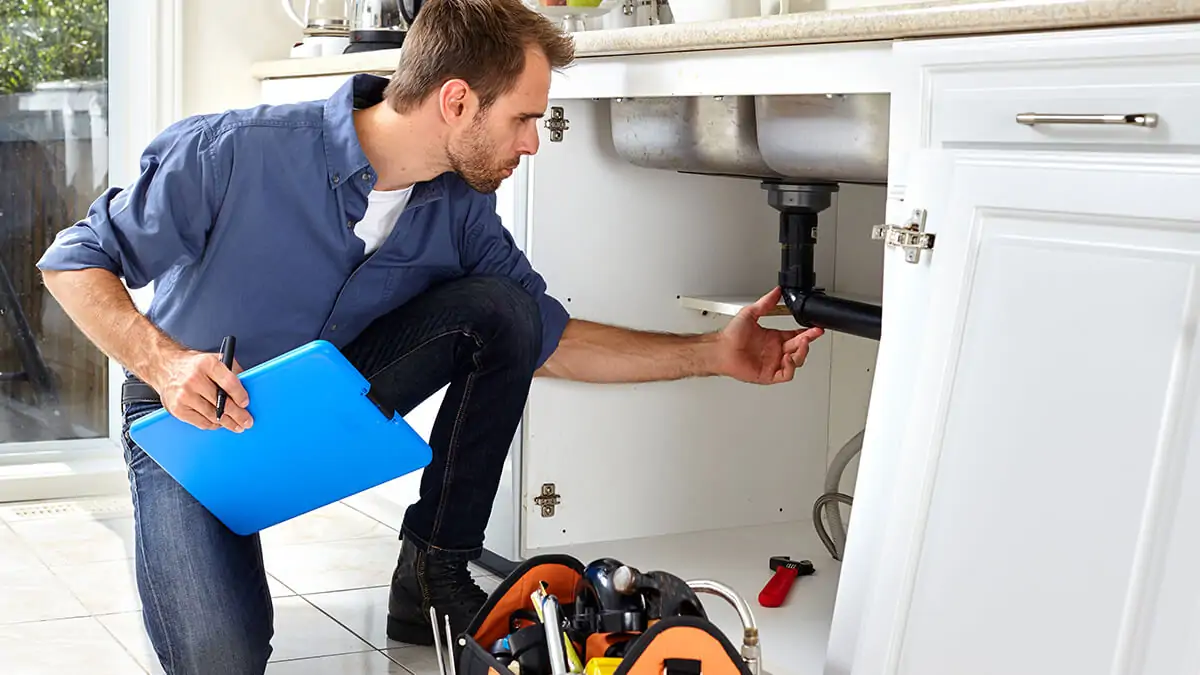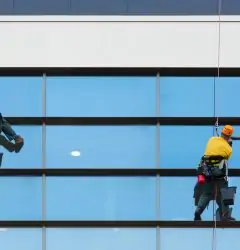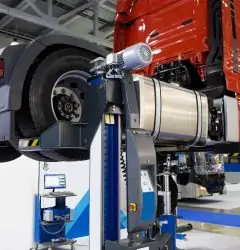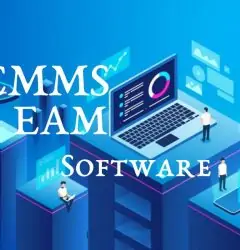02 Oct

A home plumbing inspection is an important inspection that must be carried out if you plan to move into a new house. This does not mean that it is not important for your current house; it is equally important! The plumbing plan of a house must be inspected thoroughly to prevent any unforeseen circumstances in the future, allowing a smooth running of the drainage system of your house.
What is a Plumbing Inspection?
A plumbing inspection is a routine procedure conducted by certified plumbers. Their main focus is to thoroughly inspect the plumbing system of a property for any current defects and any faults that may occur in the future. The plumbers conducting the inspection vigilantly lookout for any leaks, clogs, pipe corrosion, and burst tubes that could pose a threat to the property due to flooding.
The Importance of Plumbing Inspection
The objectives of the plumbing inspection are:
- Detection of damages at an early stage to prevent major damages in pipelines and the plumbing system.
- Prevention of an increase in the water consumption bill due to pipe leakages.
- Elimination of the hassle of delayed work due to any clogs and leaks.
- Solving issues at an early stage to prevent any bigger and costly damages from occurring.
Getting a professional plumbing inspection done saves you from the hassle of dealing with annoying slow draining sinks, pipe leakages, and weather-related issues, such as insulation of pipes against winter freezes. Performing a plumbing inspection yourself would not be as equally good as an inspection conducted by a certified plumber. The plumber’s experience and expertise would be a feather in his cap, which would be missing in your cap. To explain this further, let’s talk about a sewer line that is blocked with tree roots, that would cause the slow draining of water. If you were to inspect this on your own, there is no way that you could have been able to identify the root cause of the blockage. A certified plumber, on the other hand, after ruling out all other possibilities, would be able to identify the fault.
Since plumbing issues are considered to be the hardest to fix, it is important to get them checked professionally and frequently, especially before buying or moving into a new house. Getting the drainage system checked timely would save you from the additional costs of repairs. Getting a plumbing inspection as part of your regular maintenance regimen would prevent you from having to spend on major expensive plumbing repairs.
Types of Plumbing Inspection
A plumber uses various techniques to inspect the plumbing system thoroughly.
The different types of plumbing inspections are:
1. Visual Inspection
This is a basic and the most affordable type of inspection carried out by plumbers. The plumber inspects all sinks, bathtubs, showers, toilets, fixtures, and connections for proper drainage and water leakages. Furthermore, the water heater is also inspected for proper functionality, and the water pressure is also checked to ensure the pressure falls within the normal range. Once all of this is done, the plumber gives you a plumbing inspection report that has all the details of any repairs required.
2. Camera Inspection
A camera inspection is very useful in exploring the underground pipes for any damages or clogs that may be suspected. It is also very useful for inspected sewer related issues. These cameras can go down very deep, as much as a hundred feet into the pipe, to check the sewer well. In-camera inspection, a high-resolution camera is mounted on a flexible rod that sends real-time images to the plumber for a better picture.
In case of a sewer related issue, a camera can be put down the drain of a sink to closely check the pipes inside the house, or it can be put down an outdoor pipe to check the sewer in the yard. These cameras have sensors that can send signals as soon as they find a clog in the pipe, giving the exact location of the inspector.
3. Combo
As the name suggests, this involves both the type of inspections to get the most accurate results as possible.
Plumbing Inspection Costs
The plumbing inspection cost includes the cost of labor and the expertise provided by the inspector. However, it does not include the cost of the repairs. Usually, a plumbing inspection costs between $150 to $500. Mostly, it depends upon the type of inspection you wish to get done. The approximate prices for the different types of inspections are mentioned below.
- Visual Inspection- costs around $175
- Camera Inspection- costs around $510
- Combo Inspection- costs around $550
Whole-house inspection costs between $244 and $421. One thing to keep in mind is that a standard home inspection only includes the inspection of the plumbing system, but not the sewer line. Most home inspectors offer this service separately.
What do Home Inspectors Check?
During the plumbing inspection, the home inspectors check for the following:
1. Outdoor pipes for any leaks or clogs.
The home inspection is not just limited to indoor pipes, outdoor pipes are checked too. In areas where the temperature drops too low during the winter months, your inspector would ensure that the pipes have functional anti-freeze protection around them.
2. Main sewer line.
The main sewer line could be rusted or damaged due to tree roots, or due to decrepit pipes running from indoors to the main sewer line. This can be inspected with a camera.
3. Water heater.
The inspector would also inspect the water heater to ensure that it is operating to its full capacity with adequate pressure. The pressure relief valves and pipes are also checked, along with rust in the tank. As part of the annual maintenance of the water heater, the plumber would drain water out of the tank, and then wash out any residue and build up with a hose, and rinse thoroughly.
4. Any place where water runs.
These include sinks, lines, toilets, bathtubs, and pipes. The inspector checks them for any leaks, damages, or ill fittings.
The home inspector will check the indoor plumbing system and the outdoor pipes, including the sewer.
How Home Plumbing Works
The home plumbing inspection involves a thorough inspection of the whole plumbing system of the house. This includes the inspection of drains, pipes, valves, and water heaters. The inspector look for any leaks, ill fittings, corrosion, clogs, and drainage problems in general. Different types of plumbing inspection checklists have been discussed below.
Home Plumbing Inspection Checklist
Home plumbing inspections are carried out to buy and sell real estate. This involves the inspection of just three main things. These are:
- Checking the taps for running water
- Emptying of the drains
- Toilet flush
Home inspectors do not have the technical knowledge to inform the homeowners of any major issues in the plumbing system since it is a very basic inspection.
Rough Plumbing Inspection Checklist
This involves a professional plumbing inspection. This is more thorough than a home plumbing inspection. This involves the following:
- Checking the water filtration systems
- Inspection of sinks, tubs, and toilets
- Inspection of the bathrooms, kitchen, laundry room draining and venting systems
- Examination of fixtures, supply lines, and drains
- Inspection of the water tank or tankless water heater
- Inspection of underground sanitary drains and sewer pipes with the help of cameras
- Inspection of the valve shut off
Hot Water Heater Inspection Checklist
The most common issue faced with water heaters is corrosion. Hence, the water heaters must always be checked for any signs of corrosion. Furthermore, the water heater must also be checked for its proper operation i.e. heating the water to the desired temperature.
Plumbing Commissioning Checklist
The plumbing commissioning checklist involves questions about the piping system, to ensure that it complies with the design and functionality standards set by the local authorities. This checklist involves the following questions, split into three categories:
1. General
- Cleanliness of the work area
- Addressing safety hazards, such as low head clearance, missing equipment, etc.
- Serial numbers on equipment
- Operation of instrument gauges and meters in the normal range
- Standard labeling on valves
- Standard labeling on all equipment and components
- Repair of walls and ceiling penetrations
- Sealing of firerated construction with fire caulk and pillows
- Code compliance requirements for installation
- Checking the isolation devices for provisions for lockout devices
- Recycling and disposal of material in the correct containers
- Handling of abandoned, unused, or decommissioned equipment
- Verification of manufacturer installation, operation, and startup documents
- Requirement for workspace clearance
2. Documentation
- Submission of operation manual and specifications to the system owner
- Documentation of LOTO procedures
- Submission of as built documentation to the system owner
3. Plumbing
- Labelling of the pipes in compliance with the current standard
- Coordination of new piping tieins to the existing plumbing mains and sub mains for capacity and compatibility
- Installation of dielectric unions on dissimilar metals
- Insulation of chilled water piping
- Installation of rains
- Sloping of the gravity drain piping by following the system capacity and building code
- Venting of the plumbing fixtures
- Presence of a properly sized water arrestor
- Chemical passivation of the new chilled water piping systems according to the standards
- Silfos pipe weldments
- Performance design criteria for operation and control (line pressure, flow rates, temperature, etc.)
- Proper pipe support
- Location and cleanliness of aerators and strainers
- Alignment of faucet and flush handles
- Sealing of joints between fixtures, walls, and floors
- Installation of fixtures with the ADA and code requirements
Final Plumbing Inspection Checklist
The final plumbing checklist helps to inspect the complete plumbing system under the local authorities’ requirements. This includes questions mostly about the documentation and installation of equipment, such as water meters, on the property.
Rooftop Plumbing Inspection Checklist
The rooftop is also an important part of the house, with the drainage system going through it. A few things that must be examined include:
- Checking for any loose materials or rubbish
- Checking for any lifting roof sheets and capping
- Checking for any obstructions, such as plastic bags, on gutters and downpipes traps
- Checking the box gutter for any obstructions
Bathroom Inspection Checklist
The bathroom is inspected for the following:
- Leaks and drips in the toilets
- Leak, drips, and tight seals in the tubs and basins
- Draining time
- Clogged drains
- Leaks from the pipes
- Water temperature and pressure
Underground Plumbing Inspection
An underground plumbing inspection is easily carried out with the help of a sewer camera. It gives real-time information to the inspector for any clogs seen in the drains. These cameras can even detect tree roots growing in the sewer line.
Plumbing Inspection Pressure Test
A pressure test can be conducted by the following steps:
- Turn off the main shut off valve
- Installing proper fittings
- Connect the water gauge
- Connect the compressor hose
- Charge the system
- Turn off the compressor
- Repair plumbing leaks
Camera Inspection of Pipes
Cameras can be used to inspect the condition of pipes. These cameras can detect the exact location of a blockade or deteriorated pipes. This helps the inspector in finding out the exact location and taking action accordingly.
Water Leak Inspection
Water leak inspection can be done manually and as well as through electronic listening devices, to help hear the water pressure leaks in the pipes. Once a general area is suspected, then a tracer system is used to conduct a small electrical charge through the water lines to detect the exact location of the leak.
Plumbing Top Out Inspection
The plumbing top out inspection list consists of details regarding the following:
- Fixture vents
- Plumbing vents
- Fixture drainage lines
- Tests and inspection of sanitary drainage and potable water
- Showers
- Island fixture venting
- Vent connection and grades
- Stack venting
- Wet venting limitations
- Cleanouts, trap arm and traps
- Prohibited traps
- Protection of piping
- Piping support
- Insulate hot water lines
- Water heater regulations and installations
- Water heater pan and drain
Plumbing Water Lines in a House
Plumbing water lines are split into two systems- one that gets the clean water in and the other that tales the dirty water away. These lines are connected through fixtures, i.e. sinks, toilets, showers, washing machines, etc. The clean water supply gets split into two- the cold and hot water systems. Similarly, the wastewater pipes are also split into two- one that takes the water away, and the venting pipes that keep the sewer gas from getting into your home.
Sewer Drain Inspection
The sewer drain inspection can be conducted by the inspector visually and with the help of cameras. Leakages can be checked by other electrical devices.
Lateral Sewer Inspection
The lateral sewer is a pipe connecting a house’s plumbing to the city’s sewer system. The ideal way to perform this inspection is through robotic CCTV crawlers with the capability to perform lateral inspections from the closest manhole. While inspecting from the house, push cameras are mostly used.
Under Slab Plumbing Inspection
This type of inspection is performed then the plumbing system is located underneath a slab. The piping must be protected from impact and corrosion. The piping must be tested by water or air pressure test. However, an air pressure test must not be carried out in PVC pipes.
Whole House Plumbing Inspection
The whole house plumbing inspection involves the inspection of the interior and exterior of the house. The plumbing system of the whole house is inspected for any leakages, damages, or corrosion.
Vital Points to Remember While Performing the Plumbing Inspection
While performing the plumbing inspection, certain things must be kept in mind. These include the following vital points that must be performed during the plumbing inspection:
Shut the main water supply
Shutting the main water supply helps in finding out if there are any leaks present in the plumbing system of the house. Once when the valve has been shut off and if the water meter reading is continuously changing, this is a clear indicator that there is a leakage somewhere along with the plumbing system.
Ensure the plumbing system is watertight
This is checked by filling half of every tub installed to check if there is a tight seal present in the drainage system.
Conduct water piping pressure test
For testing the normal working water pressure, the inspector switches the pressure from 75 psi to 100 psi. Then, the water supply is checked if the water is running smoothly with the minimum water pressure requirement.
Check the sewer and drainage lines
The sewer and drainage lines are checked thoroughly for any damage, corrosion, clogs, or leakages along with the plumbing system.
Examine fixtures, supply lines, and drains
The inspector looks around for any signs of water damage indoors and outdoors. It is recommended that all fixtures must have separate valves to control the water supply of each fixture individually.
How to do Plumbing for a New House?
Clean water supply is the basic necessity of every household. There are two types of water sources for your house- water on your property from a well, pond, or nearby stream, and the city’s municipal system. The water from the water source has to be pushed through the pipes through pressure. There must be a cold water supply and a hot water supply. The hot water supply is taken care of by a hot water tank. Furthermore, the wastewater system should be running smoothly and does not mix with the clean water at any cost. There must be adequate traps and vents in your plumbing system.
A plumbing system must have the following:
- Freshwater supply entering the house
- Hot water supply after being heated in the hot water tank
- Separate pipes for greywater and sewage
- Venting pipes for allowing air and gasses to escape the system
- It is always a good idea to invest in a company providing professional plumbing expertise. If you do it on your own, chances of mishaps happening are greater than a professional plumber doing it for you.
Effective Plumbing Maintenance Tips
Regular plumbing maintenance could prevent any major damages to your plumbing system. A few of the plumbing maintenance tips have been mentioned to help save you from additional costs:
- Shut off water valves for outdoor taps
- Unclog drains as soon as the water starts to drain slowly
- Perform regular drainage maintenance
- Check the toilets for any loose fittings
- Clean the gutter regularly to prevent blockages
- Do not use chemical clog removers to clean the drains to help prevent corrosion of the pipes
- Replace hoses whenever you see signs of cracks, leakages, or brittleness
- Regularly inspect the tank
- Check faucets regularly for leaks and damages
- Check for water drips once the tap has been turned off
- Check underneath the sinks for any drips or water stains while the water is running
- Drain water from the water heater to help prevent any sedimentation
- Ensure the water pressure is always maintained at a safe level
- Regularly inspect the walls and ceilings of the house for any water stains
- Prevent a drain from clogging by not throwing any rubbish, greasy oil, or medicines in the drains
Technology Used to Streamline Plumbing Reports
Managing plumbing reports on paper is a very time consuming and boring task. In this digital era, using technology to streamline plumbing reports could help in organizing and managing the plumbing reports better. You can have all your reports in one place and access them whenever you want. From the many options available in the market, Foilo3 is a good viable option for streamlining all your plumbing reports. This app even lets you access your plumbing reports from anywhere in the world, with just one click. Technology helps in reducing the chances of errors in your plumbing reports, producing the most accurate report for your clients. Investing in a good app would be a long-term investment for you.
Final Thoughts
Conducting a plumbing inspection is an important task to be done before moving into a new house. Inspecting everything regarding the plumbing system and the sewer line will give you a better idea of the repair costs if any, that you may have to incur. Also, getting a plumbing inspection done professionally is much better than doing one by yourself.




Ecodocs